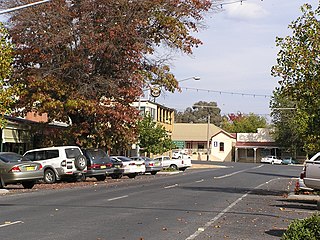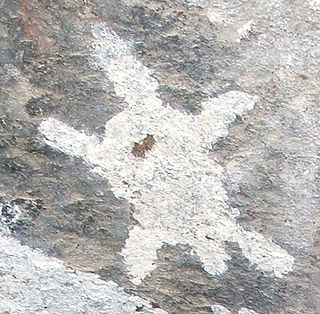
Tumbarumba is a town in New South Wales, Australia, about 480 kilometres (300 mi) southwest of the state capital, Sydney. Tumbarumba is located on the periphery of the Riverina and South West Slopes regions at the western edge of the Snowy Mountains. The 2016 census showed the population of the town and surrounding area to be 1,862 people. Locals refer to the town as 'Tumba'.

Monaro, once frequently spelt "Manaro", or in early years of settlement "Maneroo" is a region in the south of New South Wales, Australia. A small area of Victoria near Snowy River National Park is geographically part of the Monaro. While the Australian Capital Territory is not considered part of the region, some towns in the Monaro have close links with Canberra.

The Ngunnawal people, also spelt Ngunawal, are an Aboriginal people of southern New South Wales and the Australian Capital Territory in Australia.

The Thaua/Thawa, also spelt and also called Yuin-Djuin, were an Aboriginal Australian people living around the Twofold Bay area of the South Coast of New South Wales.

The Ngambri are an Aboriginal people of the Walgalu nation who claim traditional ownership of the Australian Capital Territory area. Their traditional language is Walgulu (Guumaal). They are represented by the Ngambri Local Aboriginal Land Council.
The Wandandian are an Aboriginal Australian people of the South Coast of New South Wales with connections to the Yuin and Tharawal nations.

The Ngarigo People are Aboriginal Australian people of southeast New South Wales, whose traditional lands also extend around the present border with Victoria.
The Nguburinji people, also written Ngoborindi, Oborindi and other variations, are an Aboriginal Australian people whose traditional lands lie in northwest Queensland.
The Djilamatang were thought to be a distinct Indigenous Australian people of the state of Victoria, Australia. This has recently been questioned by Ian Clark.
The Jaitmatang, also spelled Yaithmathang, are an Indigenous Australian people of the State of Victoria.
The Jadira are a people and territory in the Pilbara region of Western Australia.
The Awarai (Warray) are an indigenous Australian people of the Northern Territory.
The Walbunja, also spelt Walbanga and Walbunga, are an Aboriginal Australian people of New South Wales, part of the Yuin nation.
The Badimaya people are an Aboriginal Australian people from the Mid West region of Western Australia.
The Yaroinga (Yuruwinga) are an Aboriginal Australian people of the Northern Territory.
The Panyjima, also known as the Banjima, are an Aboriginal Australian people of the Pilbara region of Western Australia.
The Wirngir are an indigenous Australian people of the Kimberley region of Western Australia.
The Buruna, also known as the Punduna, are an Aboriginal Australian people of the Mid West region of Western Australia.
The Baiyungu are an indigenous Australian people of the Gascoyne region of Western Australia.
The Juru people also known as the ‘Yuru’ people are the proud Aboriginal people of the state of Queensland